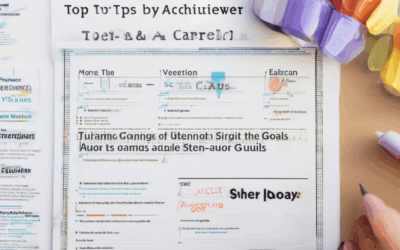Mindfulness practices have gained significant attention in recent years as individuals seek ways to manage stress, improve mental clarity, and enhance overall well-being in our fast-paced, hyper-connected world. While many people recognize the benefits of mindfulness, the process of improving these practices can feel overwhelming, especially when faced with the complexities of modern life. Whether you’re new to mindfulness or looking to deepen your existing practices, this guide offers a comprehensive exploration of the key components and strategies needed to foster greater mindfulness in daily life.

What are the 7 Cs of Mindfulness?
The 7 Cs of mindfulness are a powerful framework for cultivating awareness, compassion, and purposeful living. These principles guide individuals in developing a deeper connection with themselves and their surroundings. Here’s a breakdown of each component:
Connection
- Becoming deeply connected to oneself and one’s environment.
- Focusing attention on the present moment to foster intimacy with life.
- Engaging fully in experiences, whether through meditation, nature walks, or social interactions.
Compassion
- Understanding and empathizing with the struggles of others.
- Practicing kindness and support towards oneself and those around.
- Developing the capacity to respond thoughtfully rather than react impulsively.
Creativity
- Embracing the potential for innovative thinking and problem-solving.
- Exploring fresh perspectives in daily life and challenges.
- Encouraging a mindset open to new ideas and creative expression.
Character
- Building strong moral and ethical foundations.
- Developing qualities like honesty, integrity, and resilience.
- Cultivating a sense of purpose and meaning in life.
Contribution
- Actively seeking opportunities to give back to the world.
- Using talents and resources to make a positive impact.
- Recognizing the interconnectedness of all beings and contributing to collective well-being.
Communication
- Expressing thoughts and feelings clearly and effectively.
- Listening actively and understanding diverse perspectives.
- Maintaining healthy and meaningful relationships through mindful dialogue.
Confidence
- Trusting oneself in navigating life’s challenges and opportunities.
- Developing self-assurance rooted in self-awareness and inner strength.
- Embracing vulnerability as a catalyst for growth and connection.
How to Improve Mindfulness
Mindfulness is the practice of being fully present in the moment, focusing on your thoughts, feelings, and surroundings. Here are effective strategies to enhance your mindfulness practice:
- Set Clear Intentions – Begin by defining what mindfulness means to you. Understanding your goals can guide your practice.
- Practice Guided Meditation – Use apps like Headspace or Calm to explore various meditation techniques tailored to your needs.
- Incorporate Daily Activities – Integrate mindfulness into your routine, such as taking deep breaths during stressful moments or pausing to savor your meals.
- Journal Gratitude – Spend a few minutes each evening reflecting on three things you’re grateful for. This fosters a positive mindset and enhances mindfulness.
- Be Kind to Yourself – Practice self-compassion by acknowledging your imperfections. This reduces stress and promotes emotional balance.
- Eat Mindfully – Pay attention to your meal’s texture, taste, and smell. Eating slowly can improve digestion and reduce overeating.
- Engage in Body Awareness – Notice physical sensations without judgment. This can help manage chronic pain and stress-related issues.
- Limit Screen Time – Reduce distractions by setting designated times for devices. Replace screen time with physical activities to boost mindfulness.
- Stay Present in Challenging Situations – When faced with tough decisions or emotions, pause and acknowledge them without reacting impulsively.
- Practice Regularly – Consistency is key. Start with just five minutes a day and gradually increase your practice over time.
- Patiently Explore – Understand that mindfulness takes time to develop. Be patient with yourself as you grow in this practice.
By implementing these strategies, you can cultivate a deeper sense of mindfulness, leading to improved mental well-being and a more balanced life.

The 5 R’s of Mindfulness
- Reflection: Mindfulness begins with reflection, where you observe your thoughts, feelings, and sensations without judgment. This helps in gaining clarity and understanding yourself better.
- Resilience: Cultivating resilience is crucial as mindfulness teaches you to handle stress and challenges with calmness and strength, fostering emotional balance.
- Recognition: Recognizing your emotions and thoughts is key. It allows you to stay present and respond appropriately rather than reacting impulsively.
- Response: Responding mindfully involves acting with intention and balance. This helps in managing difficult situations effectively.
- Release: Finally, release negative emotions. Techniques like deep breathing can help you let go of stress and find inner peace.

What Are the 3 C’s of Mindfulness?
Mindfulness is often broken down into three key components, known collectively as the “Three Cs.” These principles guide individuals in developing a deeper understanding and practice of mindfulness. Here’s a breakdown of each:
- Attention :
- Definition : Focuses on cultivating present-moment awareness.
- Importance : It involves noticing sensations, emotions, and thoughts without judgment. This helps in staying grounded and engaged in the current experience.
- Acceptance :
- Definition : Involves embracing experiences with curiosity and openness.
- Importance : It encourages individuals to accept their thoughts and feelings as they are, fostering a non-judgmental mindset.
- Intention :
- Definition : Relates to setting a purpose or direction for one’s mindfulness practice.
- Importance : It helps in aligning the practice with personal goals, such as reducing stress or enhancing well-being.
By integrating these three elements, mindfulness becomes a holistic approach to living fully and authentically.
The 3-3-3 Rule in Mindfulness
The 3-3-3 rule is a simple yet effective mindfulness technique designed to help individuals ground themselves and reduce anxiety during overwhelming moments. Here’s a breakdown of how it works:
- Three Things You Can See
Identify three distinct objects in your immediate surroundings. These could be anything from furniture, windows, or even natural elements like trees or clouds. Focusing on these visual cues helps shift your attention away from anxious thoughts and grounds you in the present moment. - Three Things You Can Hear
Pay attention to three separate sounds in your environment. This could include things like a ticking clock, birds chirping, or the sound of traffic outside. Listening to these sounds helps center your awareness and creates a sense of calmness. - Three Things You Can Feel or Move
Engage your senses by identifying three physical sensations or movements. This could involve noticing the feeling of your feet on the floor, the texture of an object you’re holding, or simply taking three slow, deep breaths. Movement, such as stretching or shifting your weight, can also contribute to this aspect of the exercise.
By focusing on these three areas—the visible, the audible, and the tangible—you create a mental anchor that can help stabilize your emotions and bring clarity during stressful times. This practice is often recommended for its ability to promote relaxation and emotional balance.
Source: Healthline

The 4 R’s of Mindfulness
The practice of mindfulness is rooted in recognizing the present moment with kindness and awareness. Below are the four key components, known as the “4 R’s,” that guide individuals in cultivating mindfulness effectively:
- Recognize :
- Begin by acknowledging your thoughts, emotions, and sensations without judgment.
- Practice observing your inner world as it is, rather than trying to change or suppress it.
- This step helps in building awareness and fostering a non-reactive mindset.
- Reframe :
- Shift your perspective by viewing challenges as opportunities for growth.
- Engage in positive affirmations or visualize scenarios where you feel calm and confident.
- Reframing allows you to approach situations with a clearer and more balanced outlook.
- Relax :
- Use techniques like deep breathing exercises to calm your body and mind.
- Incorporate gentle stretches or progressive muscle relaxation to release tension.
- Relaxation is essential for creating a stable foundation from which mindfulness can flourish.
- Respond :
- Act with intention and purpose, rather than reacting impulsively.
- Choose words or actions that align with your values and long-term goals.
- Responsive actions stem from a place of inner peace and clarity.
By mastering these four R’s, individuals can develop a sustainable mindfulness practice that enhances emotional resilience and overall well-being. This approach emphasizes balance, patience, and self-compassion, making it accessible to anyone looking to integrate mindfulness into their daily life.




0 Comments